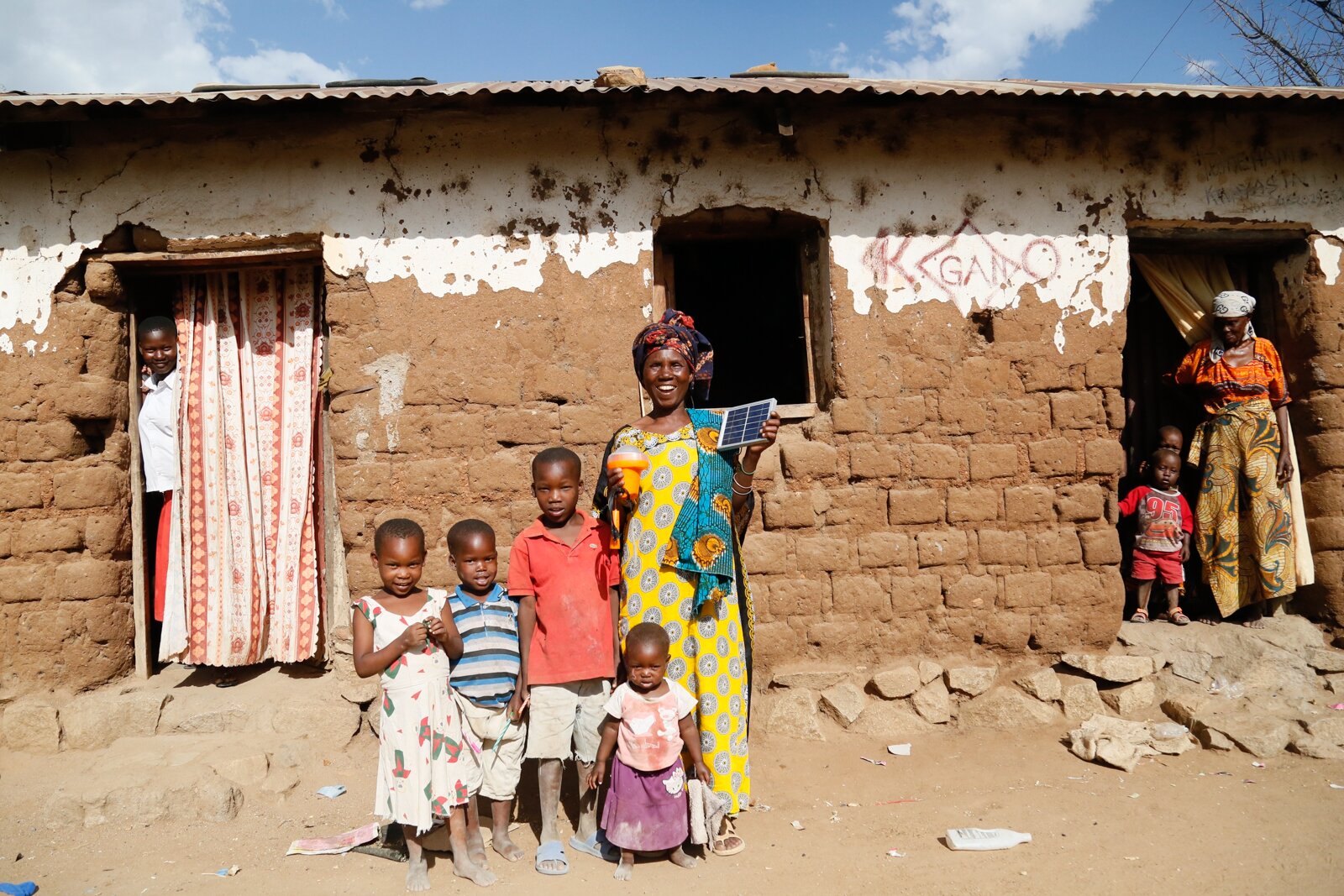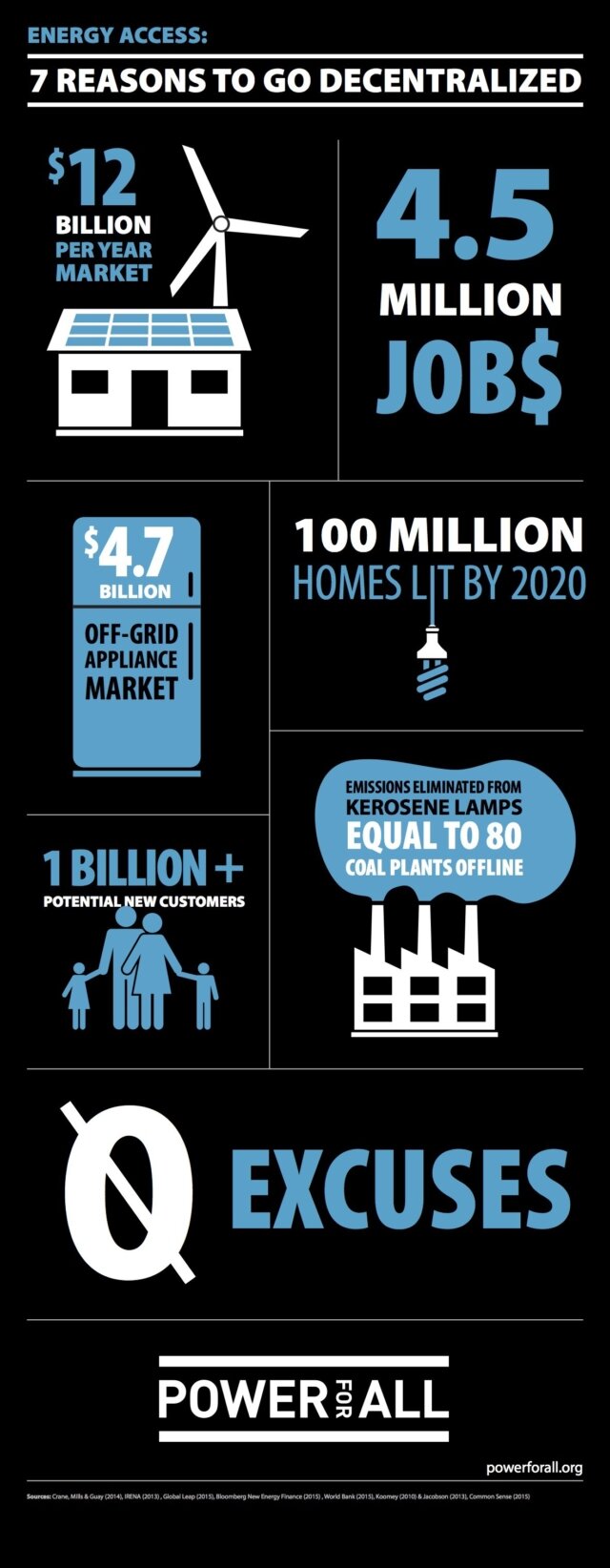How Africa and India are hacking the grid
A rapidly growing army of entrepreneurs and companies in Africa and South Asia are creating a new energy paradigm built on services, community and flexibility.

The electric utility has been around for 135 years and has changed little. It’s a curious fact given modern society’s lust for innovation. Why do we settle for 19th-century solutions when we have 21st-century technologies offering a new vision for energy infrastructure — a vision that is clean, quicker to deploy and more empowering? It’s a situation ripe for disruption, and nowhere are people hacking “the grid” more than in the countries of sub-Saharan Africa and South Asia.
The reason is clear: the international development community has been promising universal “energy access” for three decades, yet 1.1 billion people — 85 per cent of whom live in remote areas that are prohibitively expensive to reach with business-as-usual approaches — still wake up every morning to face another day without electricity. Tired of a situation that former United Nations secretary general Kofi Annan has called “intolerable, avoidable and profoundly unfair,” a rapidly growing army of entrepreneurs and companies in Africa and South Asia are working to defeat the problem themselves, and in the process, they are creating a new energy paradigm built on services, community and flexibility.
The grid, in reverse

Think of the traditional grid as a hub and spokes. The decentralized model is to build the spokes, and if one day they connect back to a hub, or to each other, great. If not, that’s fine too. Rather than focusing on big, expensive and slow-to-build (nine years on average) centralized power plants and transmission projects that have been the darling of development banks such as the World Bank, the new generation of energy developers in sub-Saharan Africa and South Asia are using advances in remote sensors and mobile payment, and the rapid decline in the cost of solar, wind, biomass, hydro and other renewable technologies, to provide affordable, reliable power today, in the places that need it most.
What’s emerging in sub-Saharan Africa is an explosion of rooftop solar and mini-grids. Companies like Powerhive, SteamaCo and JUMEME are building hundreds of mini-grids that will power millions of customers in East African countries like Tanzania, Kenya and Rwanda. Solar “pay-as-you-go” companies, tapping into the power of near total mobile phone (and mobile money) penetration, are also seeing huge growth in East Africa. At latest count, M-KOPA has more than 300,000 customers, Mobisol expects to have connected 100,000 households this year and Off Grid Electric is targeting one million customers in Tanzania. And the momentum in East Africa is spreading west to Nigeria, which is the biggest potential market, representing one-sixth of sub-Saharan Africa’s more than 600 million rural unelectrified. Already, the Solar Nigeria program is making a major dent, supporting access to household energy for more than 130,000 people, while company Nova Lumos is targeting 100,000 customers in Nigeria by the end of 2016.
Easier to build new than to break old
In India, the government is racing to extend the grid to the whole country by 2018 (including 300 million people without electricity access), and expects rooftop solar and mini-grids to play a significant role. Rather than retrofitting an entrenched centralized grid to accommodate decentralized generation the way Europe and the United States have done, India is working to create a new energy infrastructure that integrates decentralized solutions from the beginning. That includes a massive target of 40 GW of rooftop solar by 2022.
The ambitious goals have created a flurry of corporate activity, with multinationals like TATA Solar and smaller firms such as Greenlight Planet, Simpa Networks and Boond betting on the decentralized sector. A new generation of mini-grid companies such as OMC, Mera Gao Power and Husk Power are also planning thousands of projects to connect village homes and businesses, often alongside the grid.

Similar efforts in Bangladesh, Nepal and Sri Lanka have also shown significant progress, with tens of millions of people receiving clean, decentralized power, and proving that small, not big, is a critical and reliable piece of the new energy future. While much focus is on the rapid rise of solar technology in recent years, micro-hydro, wind and biomass all play a critical role in energy access, with 2,200 micro-hydro plants in Nepal alone.
Just the beginning
Delivering energy access with decentralized renewables has an extraordinary cascade effect. As well as huge social benefits, improving health, safety, education and the environment, it is estimated that the decentralized renewable industry will create at least 4.5 million jobs in the next 15 years, many of them coming in South Asia and Africa. The opportunity has already produced hundreds of new companies, which are attracting top talent and developing cutting-edge innovation.
Yet much of the business and job creation around decentralized renewables to date has occurred with limited policy support. Now, even that is changing. Dozens of governments in sub-Saharan Africa are adopting pro-decentralization policies, and committing to major targets for rooftop solar and mini-grids. For example, in East Africa rooftop solar systems are seeing reductions in VAT and tariffs, while the Indian state of Uttar Pradesh just became the first to issue policies favourable to mini-grids, with other states expected to follow.
The pieces are beginning to fall into place. The business ecosystem, a positive policy environment free of fossil fuel subsidies, and innovative and supportive financing. The opportunity is huge. Africa and South Asia have started down a decentralized path that may not only help to end energy poverty, but result in an energy future that is resilient to climate change, sustainable, affordable and an engine of growth in emerging markets. This energy hack could change the face of development and the chances of a generation.
